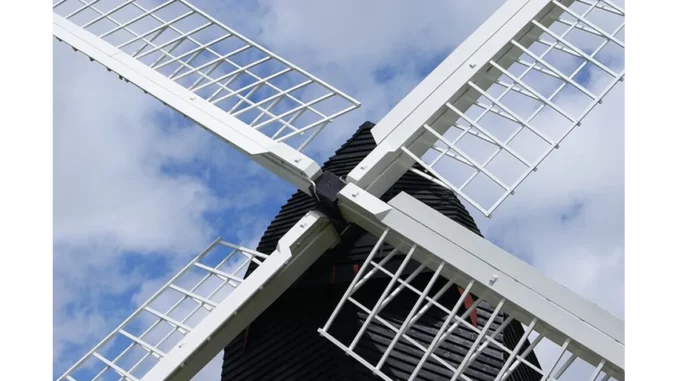
Recently, I had the distinct pleasure of conversing with Sarah Thompson, a seasoned sustainability consultant, to delve into some of the most compelling eco-friendly properties currently available in the UK market. Our dialogue was particularly focused on a remarkable property in Buckinghamshire that exemplifies the harmonious integration of contemporary design and environmental stewardship. Sarah’s insights offer a fascinating glimpse into this angular eco-home and other sustainable residences that promise to elevate one’s eco-credentials.
Successful low-energy building design hinges on careful planning. Focus360 Energy can help.
The Angular Eco-Home in Buckinghamshire stands as an epitome of sustainable living, according to Sarah. “This home is a marvel of modern architecture in sync with its natural surroundings,” she said with evident enthusiasm. “Listed by United Kingdom Sotheby’s International Realty, it’s one of the finest examples of biophilic design I’ve encountered.” The home’s unique angular structure seamlessly merges with the rolling landscape, featuring large glass panels that flood the interiors with natural light, thereby reducing the dependence on artificial lighting. The use of local and recycled materials further underscores its minimal environmental footprint.
Sarah elaborated on the extensive array of eco-friendly features that make this home truly exceptional. “It boasts state-of-the-art solar panels and an air source heat pump, making it nearly self-sufficient in terms of energy. The mechanical ventilation with heat recovery (MVHR) system ensures a consistent indoor temperature while supplying fresh air, enhancing both comfort and health.” She also pointed out the inclusion of an electric car charging point as a forward-thinking amenity. “This home is designed not just for sustainable living today but also for a greener future,” she added.
Our conversation then broadened to include other notable eco-friendly properties currently on the market. Sarah’s insights were both enlightening and inspiring, providing a comprehensive look at the diversity and innovation in sustainable living.
Spring Meadows in Drighlington, Leeds, offers brand new townhouses designed with minimal carbon footprints. “These homes are so well-insulated that heating is rarely necessary, even during winter,” Sarah noted. “Triple glazed windows, solar panels, and a smart renewable energy system make these homes remarkably efficient.” Similarly, Hollymead Square in Newport, Essex, stands out with its ‘Zero Bills’ development, a collaboration between The Hill Group and Octopus Energy. “Residents won’t receive energy bills for five years, thanks to heat pumps, solar PV panels, and batteries to store surplus electricity,” she explained.
In Devizes, Wiltshire, Marlborough Close showcases how older homes can be retrofitted for modern, eco-friendly living. “These properties have been upgraded to achieve an EPC A rating, featuring AI-powered smart cylinder tanks, solar panels, and enhanced insulation through thermal rendering,” Sarah said. Meanwhile, Stoney Wood in Wynyard Village, County Durham, adheres to Part L regulations, focusing on fuel and power conservation. “These homes are equipped with underfloor heating, air source heat pumps, and electric car charging points, combining luxury with sustainability.”
Wester Happrew in Peebles, Scottish Borders, is a captivating renovation project. “Originally a granary, it has been transformed into a carbon-neutral home with triple glazed windows, solar panels, and a ground source heat pump,” Sarah mentioned. “The far-reaching views and modern interiors make it a dream home for eco-conscious buyers.” Similarly, Wotaview in Barnstaple, Devon, has been ingeniously repurposed from a Victorian water reservoir. “It now features a super-insulating grass roof, triple glazing, and a ground source heat pump, with panoramic views over the Bristol Channel adding to its charm,” she said.
The Den in Ansty, Dorchester, Dorset, holds the distinction of being the first Passivhaus built in the county. “Highly insulated with triple glazing and featuring a mechanical ventilation and heat recovery system, it’s a prime example of integrating energy efficiency into every aspect of a home,” Sarah noted. Luxley House in Golders Green, London, is one of the first net zero developments in the country, incorporating a green living wall, air source heat pumps, and solar PV cells. “Its superquilt insulation reflects 98% of radiant heat back into the building, making it incredibly energy-efficient,” she added.
In Petersfield, Hampshire, the extensive living space comes replete with numerous eco-features. “Triple glazing, solar panels with battery storage, and a clean air ventilation system make it ideal for those seeking both space and sustainability,” Sarah pointed out. Yarrow House in Birch Grove, Chalfont St Giles, Buckinghamshire, is one of three architecturally striking net zero homes. “It embodies biophilic design principles with planted atriums and blended indoor-outdoor living spaces. The solar panels, air source heat pump, and electric car charger make it a pinnacle of sustainable living,” she concluded.
As our discussion wrapped up, it became evident that the landscape of sustainable living is both diverse and exhilarating. These properties not only mitigate environmental impact but also offer modern comforts and aesthetic appeal. For those committed to enhancing their eco-credentials and making a long-term investment in the planet, these homes present an ideal opportunity.


Be the first to comment